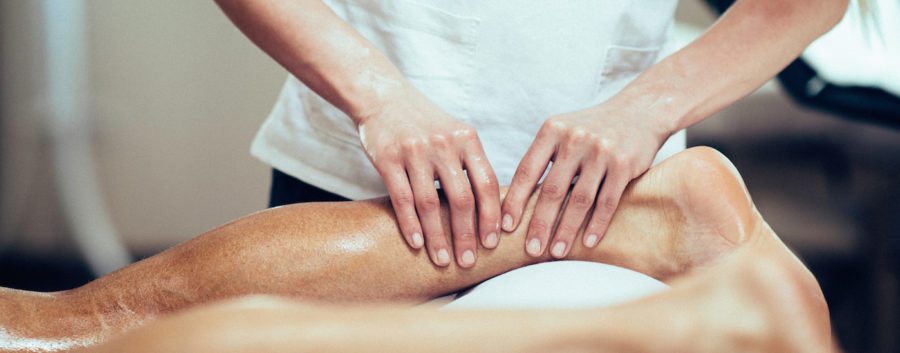Massage could increase the regrowth of muscle tissue after an injury — even when applied to the opposite, uninjured limb — according to researchers from Colorado State University and the University of Kentucky.
In a paper published this week in The Journal of Physiology, the researchers showed that muscle grew faster after a massage because the making of protein in cells was improved. They also showed that when one leg was massaged, the muscle in the other, non-massaged leg also grew faster.
Muscle is lost very quickly during periods of disuse, such as during bed rest or a hospital stay, and it is extremely difficult to grow back, especially in older people. Massage is an easy-to-use treatment with very few side effects that can lessen pain, decrease anxiety and stress, increase flexibility, improve immunity, and increase blood flow. But its value for muscle regeneration had not been demonstrated before.
Groundbreaking result
Karyn Hamilton and Ben Miller, faculty members in CSU’s Department of Health and Exercise Science who were first authors on the paper, say the concept that massaging one limb might also lead to benefits in another non-massaged limb is groundbreaking.
“For instance, if you injured one leg and couldn’t massage it because of that injury, we now have evidence suggesting that massaging the other non-injured leg could lead to benefits in the injured leg,” Hamilton said. “That’s a novel finding with potentially very important implications.”
The researchers used rats that underwent a period of inactivity to decrease muscle mass, then were allowed to recover. During the recovery period, the rats were massaged by a device that applied pressure to the muscle in a highly controlled manner. Massage was applied every other day for a week, and researchers analyzed the muscle for the size of muscle fibers, making of proteins, presence of other cells (for example, muscle stem cells), and communication in the cells that programs them to grow.
“While this first study only involved rats, we are hopeful that it will have similar implications for humans,” Miller said.
The research team is just beginning similar studies with human participants as part of research taking place at the University of Kentucky.
Real-world relevance
“This research project demonstrates how Dr. Miller, Dr. Hamilton and their colleagues are using sophisticated techniques for assessing basic muscle physiology to address practical questions with real-world clinical relevance,” said Barry Braun, head of the Department of Health and Exercise Science at CSU.
The intervention was only used during recovery after muscle loss. The researchers used massage every other day, since that’s what is used in a clinical situation, but it is unknown if more frequent massage would result in even greater benefits. In addition, the work was only performed in healthy adult animals, and it is important to see if it will also work with older ages and in the presence of diseases associated with aging.
“We foresee that massage could be used in situations where other treatments, such as exercise, can’t be applied: in the intensive care unit and in patients who are under non-weight-bearing orders after orthopaedic surgeries,” said Esther E. Dupont-Versteegden, one of the investigators at the University of Kentucky’s College of Health Sciences.
Dupont-Versteegden and her University of Kentucky colleague Tim Butterfield were co-senior authors of the paper. The research project was funded with grants from the National Institutes of Health.
About the society
The Physiological Society, which is based in the United Kingdom, brings together more than 3,500 scientists from over 60 countries. The society promotes physiology and supports physiologists by organizing world-class conferences, offering grants for research and publishing the latest developments in the field in its three leading scientific journals, The Journal of Physiology, Experimental Physiology andPhysiological Reports.
CSU’s Department of Health and Exercise Science is part of the College of Health and Human Sciences.



Was there a control group? A group of rats that were not massaged?